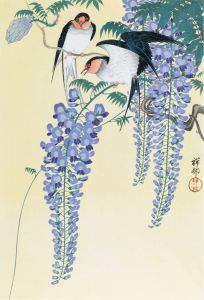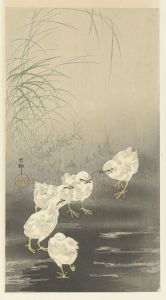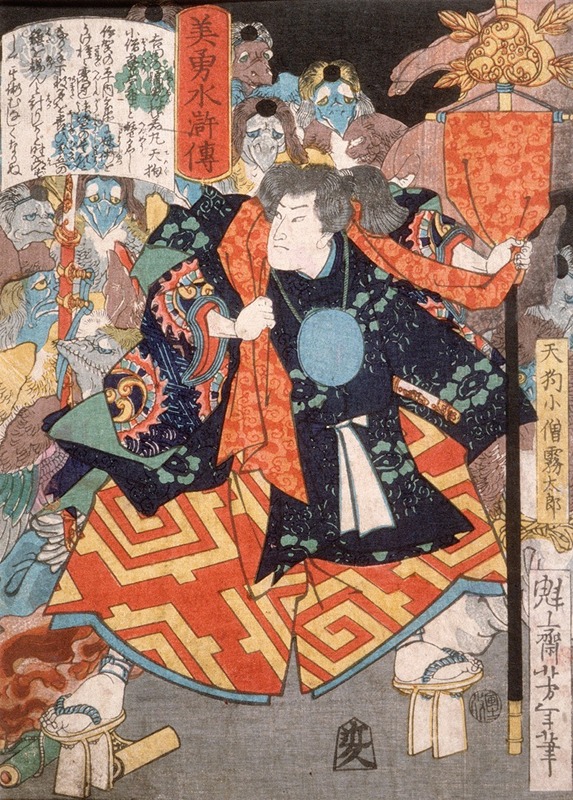
Kozō Kiritarō, Young Priest of the Tengus
A hand-painted replica of Tsukioka Yoshitoshi’s masterpiece Kozō Kiritarō, Young Priest of the Tengus, meticulously crafted by professional artists to capture the true essence of the original. Each piece is created with museum-quality canvas and rare mineral pigments, carefully painted by experienced artists with delicate brushstrokes and rich, layered colors to perfectly recreate the texture of the original artwork. Unlike machine-printed reproductions, this hand-painted version brings the painting to life, infused with the artist’s emotions and skill in every stroke. Whether for personal collection or home decoration, it instantly elevates the artistic atmosphere of any space.
Tsukioka Yoshitoshi (1839–1892) was a renowned Japanese ukiyo-e artist, known for his innovative and dynamic woodblock prints. One of his notable works is "Kozō Kiritarō, Young Priest of the Tengus," which is part of his series "New Forms of Thirty-Six Ghosts" (Shinkei Sanjūrokkaisen), created in the late 19th century. This series, completed between 1889 and 1892, showcases Yoshitoshi's fascination with supernatural themes and his mastery in depicting them through the ukiyo-e medium.
"Kozō Kiritarō, Young Priest of the Tengus" illustrates a scene from Japanese folklore involving tengus, mythical creatures often depicted as bird-like humanoids with supernatural powers. Tengus are traditionally considered both protectors and dangerous beings, known for their martial prowess and trickery. In this print, Yoshitoshi captures the essence of these creatures through his intricate design and attention to detail.
The artwork portrays Kozō Kiritarō, a young priest, in an encounter with tengus. Yoshitoshi's depiction is vivid and dynamic, emphasizing the tension and drama of the scene. The composition is carefully balanced, with the figures of the tengus rendered in expressive poses that convey their otherworldly nature. Yoshitoshi's use of color and line work enhances the mystical atmosphere, drawing the viewer into the narrative.
Yoshitoshi's "New Forms of Thirty-Six Ghosts" series is significant for its exploration of traditional Japanese folklore and its innovative approach to the ukiyo-e genre. During the Meiji period, when Japan was undergoing rapid modernization and Western influence, Yoshitoshi's work represented a bridge between traditional Japanese art and contemporary themes. His ability to adapt and innovate within the ukiyo-e tradition helped to revitalize the art form during a time of cultural transition.
"Kozō Kiritarō, Young Priest of the Tengus" exemplifies Yoshitoshi's skill in storytelling through visual art. His prints often feature complex narratives that draw from historical, literary, and mythological sources. In this work, the interaction between the human and supernatural elements reflects the rich tapestry of Japanese folklore, where the boundaries between the natural and supernatural worlds are fluid and intertwined.
Yoshitoshi's influence extends beyond his lifetime, as his work continues to be celebrated for its artistic and cultural significance. His prints are highly regarded for their technical excellence and emotional depth, capturing the imagination of audiences both in Japan and internationally. "Kozō Kiritarō, Young Priest of the Tengus" remains a testament to Yoshitoshi's enduring legacy as a master of ukiyo-e and a storyteller of the supernatural.
In summary, "Kozō Kiritarō, Young Priest of the Tengus" by Tsukioka Yoshitoshi is a captivating example of the artist's ability to blend traditional Japanese folklore with the ukiyo-e art form. Through his innovative techniques and compelling narratives, Yoshitoshi has left an indelible mark on the world of Japanese art, and his works continue to be appreciated for their beauty and cultural richness.





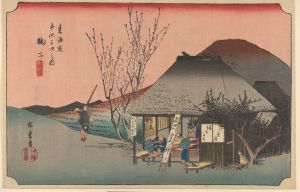

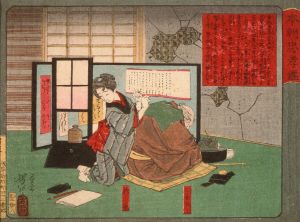
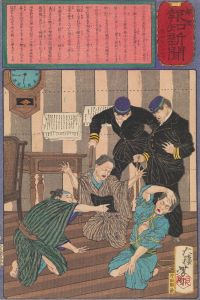
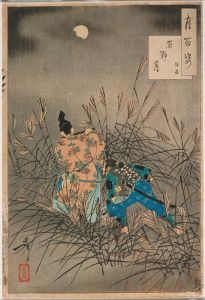

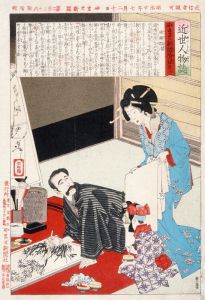
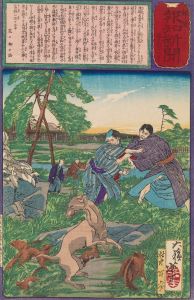
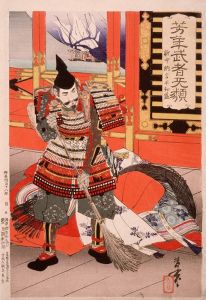
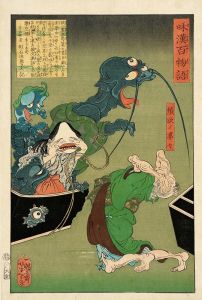
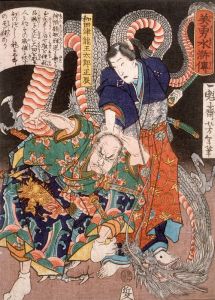
![Musha]taira no tomomori](/imgs/225657/s/tsukioka-yoshitoshi-mushataira-no-tomomori-bb591b96.jpg)
